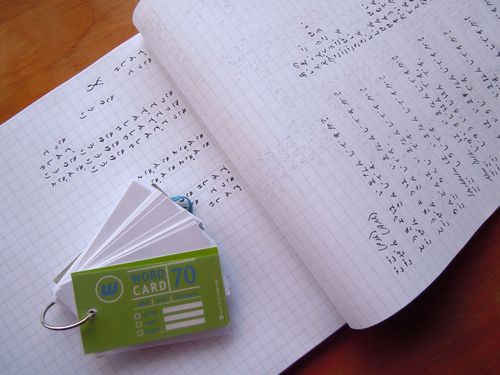CONTRIBUTED BY ERIN SCHALK
We are continuing a series on self-taught Japanese. To read Part I, click HERE.
Rosetta Stone vs. Mango Languages:
We have all seen plenty of Rosetta Stone advertisements and know of its large price tag. As military families, we can (thankfully!) avoid that cost by registering for an account through the Kadena Library. But, is it the best resource to use for self-teaching Japanese? The answer is: that depends.
In the past, I worked at a library, and was fortunate to have had opportunities to test many different language-learning resources, and eventually became the “go-to gal” for patrons wanting to learn a language. I remember one patron expressing his frustration with trying to learn Japanese through Rosetta Stone. Previously, he had learned Spanish using Rosetta Stone and gained a solid level of proficiency. Not so with Japanese.
In my opinion, the difficulty of learning Rosetta Stone Japanese involves the unfamiliar grammatical rules. Most of us know about Rosetta Stone’s immersive learning philosophy. This can certainly work well, up to a point. As children, we learned much of our native language in an immersive environment: listening to our parents speak to us, watching television, interacting with our friends, and so on.
In school, however, we gained increased fluency in our mother tongue through classes explaining key grammar concepts that would have been quite difficult for us to infer on our own. (Please, Mrs. Baylong, no! Don’t make me read an extra chapter of Voyages in English as a punishment!) Also, hearing and seeing Japanese isn’t enough for many of us, especially for adults who do not have the amazingly absorbent brains of children! Why does Japanese have all of these particles? What is the difference between “wa,” “ga,” and “ka?” How are they used? Rosetta Stone will not tell us explicitly, often leaving us feeling confused and discouraged.
Fortunately, this frustration can be lessened by supplementing Rosetta Stone with a Japanese textbook to fill in the missing “grammar gaps.” Plus, Rosetta Stone’s immersive environment has many positive attributes. It eliminates translating words into your native language, creating that 2-step approach to learning that I mentioned in last weeks post. The program is also interactive, challenging you to match a piece of spoken dialog with a corresponding image, filling in the missing word from a sentence, and so forth.
Mango Languages is another great Japanese learning resource that MCCS libraries provide. One minor drawback to Mango is that it is not as interactive as Rosetta Stone, meaning it will play a short dialog, have you repeat it, and quiz you on it later. This can work well for you if you learn best by listening and repeating, but some of us (myself included) need a bit more variety to learn effectively.
Mango, however, offers benefits that Rosetta Stone does not, depending on your learning style and goals. Mango breaks up lessons with a few Japanese culture and etiquette tips – information which can be just as important as knowing Japanese itself! It also takes time to explain a grammatical concept pertinent to each lesson, helping alleviate the “grammar gaps” problem. Unlike Rosetta Stone, which begins teaching sentences such as, “The boy is drinking,” and “she is sleeping,” Mango focuses on phrases that are immediately practical for everyday use such as, “Nice view, isn’t it?” and “What country are you from?”
Access to Rosetta Stone and Mango is free for military families on Okinawa, provided you obtain an account through a base library. Ask your library for more details on their policies, available seats, and obtaining access.
Coming Next Week: Part III, Text Fugu.com

